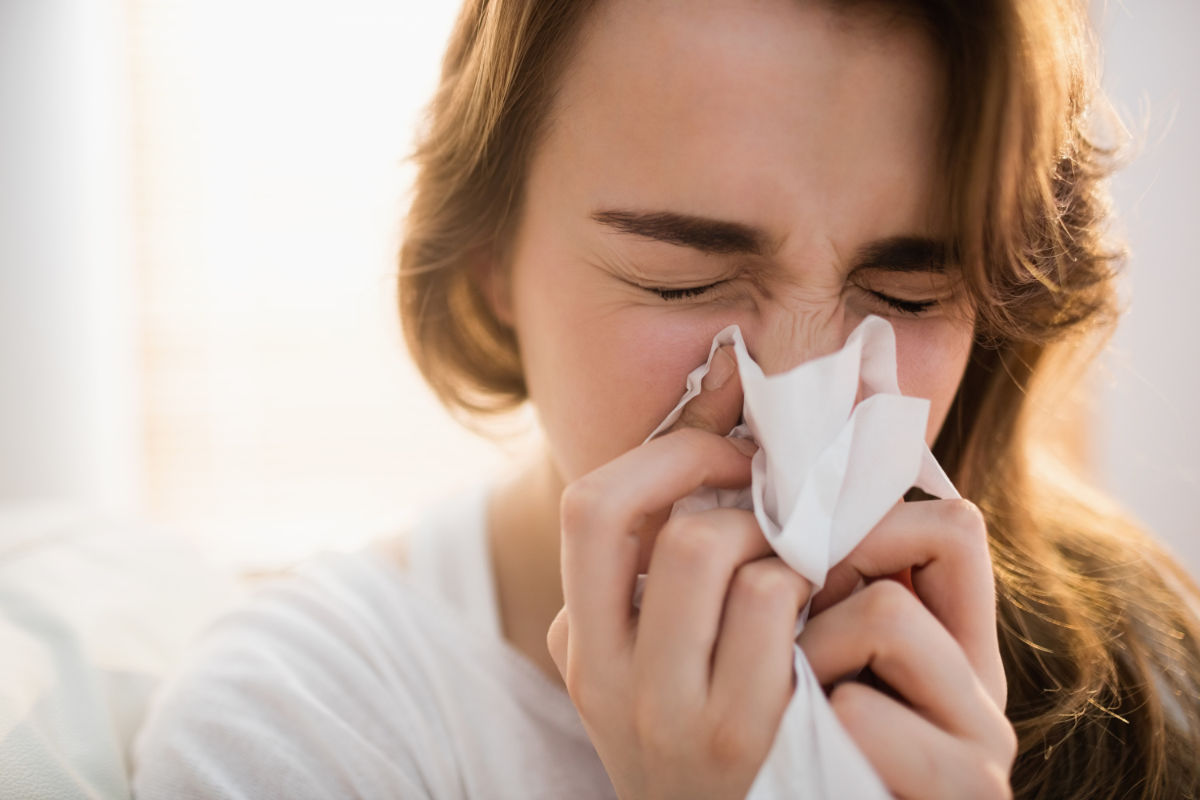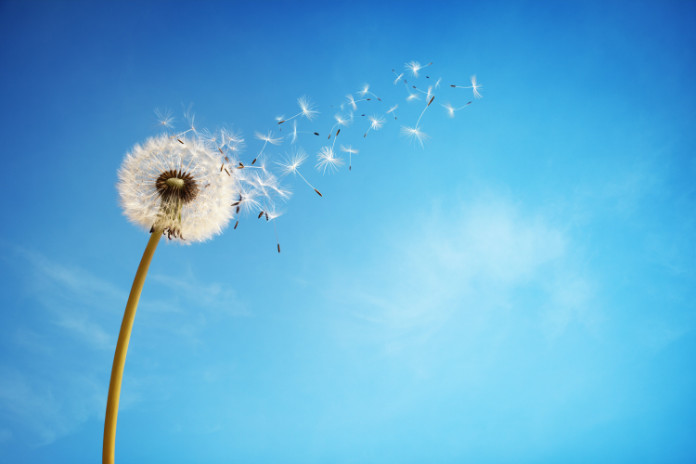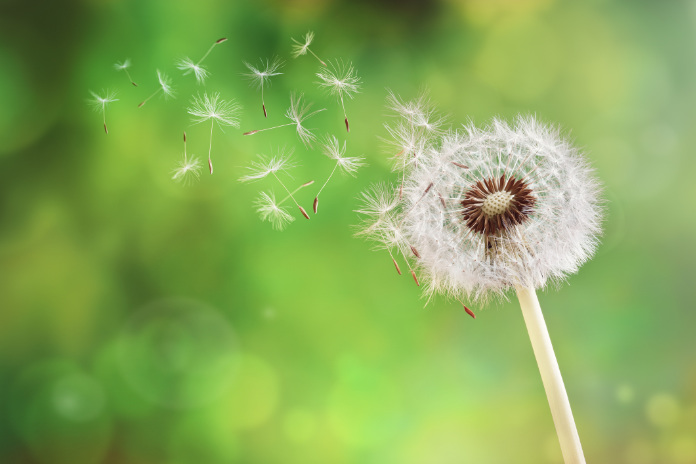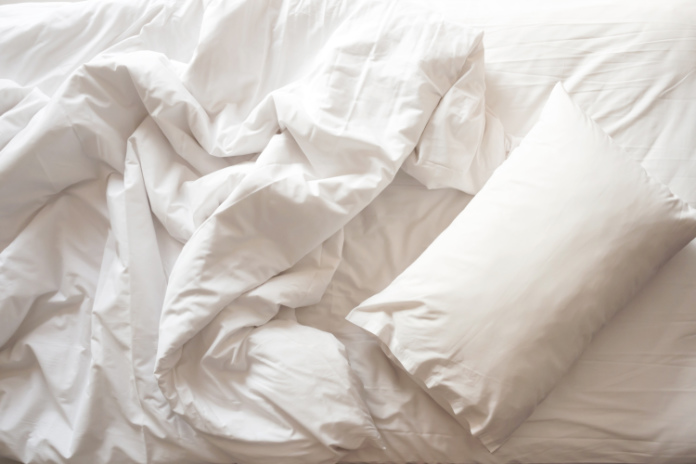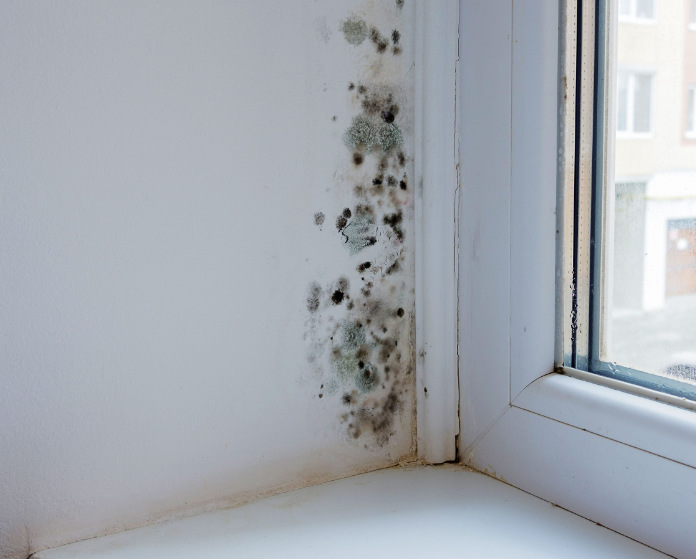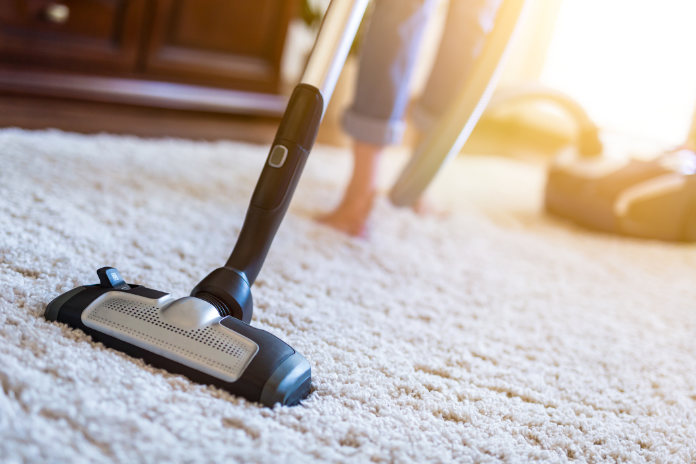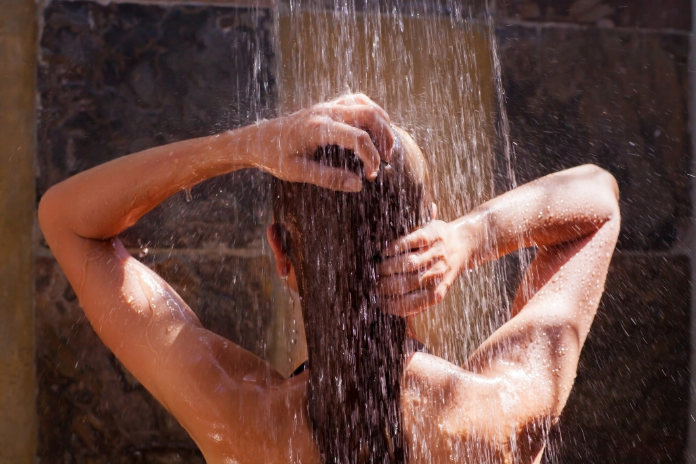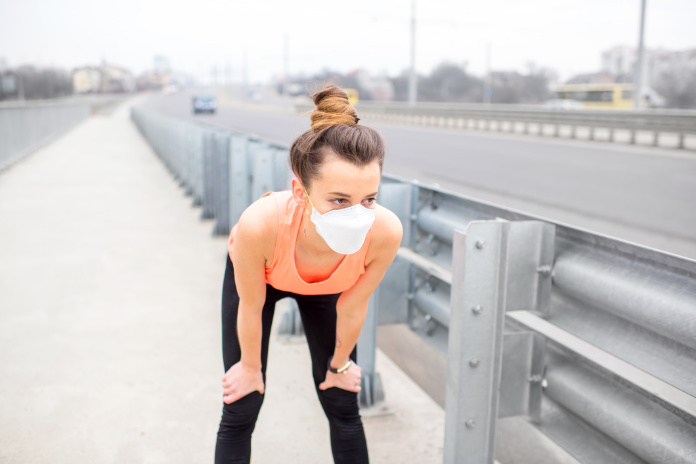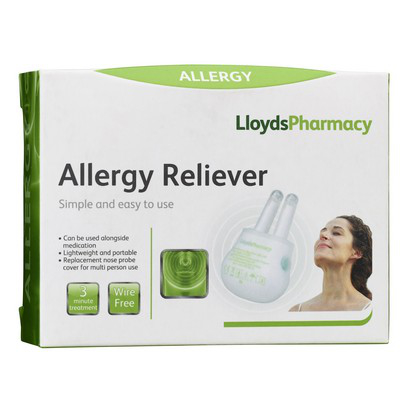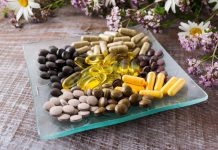If summertime means continual itching, watery eyes and sneezing into the crook of your elbow, you’re probably one of the 13 million unlucky people in the UK affected by hay fever. Also known as allergic rhinitis, this irritating condition is an allergic reaction to pollen that usually gets worse between late March and September, when its warm and humid.
It’s estimated that 40% of the population suffer from hay fever, and even with closed windows, pollen can find its way indoors and prevent people from going about their day-to-day life.
The most common symptoms are usually caused when our bodies, in contact with the outside, produce allergic antibodies to proteins in tree and grass pollen. When pollen is inhaled, the proteins cause the antibodies to burst and release histamine. It’s this defence system that triggers the sneezing, itching, sore eyes and runny nose that many of us experience in the warmer months.
In the longer-term, symptoms can cause airways to inflame and block, resulting in poor sleep, infections or sinusitis. This can also lead to the skin around the eyes becoming swollen. The main triggers of hay fever are tree pollen, grass pollen, weed pollen and fungal spores, with grass pollen being the most common; it affects up to 90% of those who are unlucky enough to experience hay fever.
When the pollen count is high, it can make getting outdoors a misery, causing many of us to miss out on spring walks, outdoor BBQs and picnics.
Top hay fever triggers to avoid
Although we often associate hay fever with plants, it’s not just a lunchtime walk in the park that can cause an unpleasant reaction. We asked LloydsPharmacy pharmacist Pareena Patel to explain the top four triggers we need to be on the lookout for.
1. Pollen
There’s a reason your nose starts tingling when the weather gets warmer: Grass, weed and tree pollen is released when the climate starts to heat up, as part of the plant reproductive cycle. The airborne powdery substance contains proteins that are harmless for most people, but can prompt allergic reactions when breathed in by some.
“Pollen usually is the biggest trigger for those who experience hay fever symptoms,” says Patel, “and if you have an allergic reaction to it, it causes your immune system to overreact and produce a compound called histamine.” It’s the histamine that irritates and inflames the nose, eyes and throat, causing symptoms similar to those of the common cold.
Patel says grass pollen, which is common from around May to June, is the most common plant-based allergen, but tree pollen is another that can cause you grief too. While it affects less people, it does have a longer season – from February to June.
During the hay fever months your symptoms can be worse if you live with asthma too, as your airways may already be swollen, and the inflammatory effect of a hay fever reaction can add to the difficulty of breathing.
Medical experts advise that the first line of treatment for hay fever is an oral anti-histamine – most are readily available from a pharmacy without prescription, but it’s a good idea to check with the pharmacist whether they’re suitable for you.
2. Pollution
“Air pollution is becoming increasingly prevalent in the UK, which can be another big trigger for hay fever,” says Patel.
“Dust, soot, diesel and traffic fumes can all quickly irritate your airways and trigger hay fever,” warns Patel. “If pollution is a trigger for you, you’ll need to make sure you check pollution levels before your leave the house.”
You can check the damage in your local area on the Met Office website (metoffice.gov.uk). Patel says it’s also a good idea to try to avoid places such as busy car junctions, bus stops and car parks on high pollution days – so take the scenic route to work instead.
As well as avoidance tactics, keeping a couple of key products in your handbag could help. “Drug-free therapy such as the LloydsPharmacy Allergy Reliever (£19.99, lloydsPharmacy.com) can help alleviate symptoms naturally,” suggests Patel. “There are also a range of eye-drops available that contain the active ingredient sodium cromoglicate, such as Opticrom Hayfever Eye Drops (10ml, £4.00, amazon.com) that you might want to try.
“As always though, you should speak to your pharmacist about finding a hay fever solution which works for you, depending on your symptoms.”
3. Dust mites
If the itchy eyes and dry throat tend to stick around past sneeze season, it might not be hay fever it all – it could be a reaction to the microscopic creepy crawlies living in your bed.
“Dust mites can be bothersome all year-round to people who suffer with hay fever, aggravating symptoms because they cause an additional allergic reaction,” says Patel.
House dust mites are creatures so small they cannot be seen with the naked eye. They live in every household and are most commonly found in pillows, mattresses, carpets and soft furnishings, but they can even be found on clothing too.
“The usual signs of a dust mite allergy include those common to hay fever, such as sneezing and a runny nose,” says Patel. “Many people with dust mite allergy also experience signs of asthma, such as wheezing and difficulty breathing.”
If you find yourself bearing the brunt of the symptoms at home, it’s a good idea to regularly wash bedding in very hot water (over 50C) and wear a mask when attempting a spring clean, as this stirs up the dust particles, making them easier to inhale.
4. Mould
If you’ve been putting off fixing the mouldy grouting around the tiles in your bathroom, here’s a good reason to get started this weekend.
“Moulds are a type of fungus which can cause an allergic reaction either on their own or aggravate allergies such as hay fever,” says Patel. “Your immune system reacts abnormally when you breathe in the tiny seeds (called spores) that are released in the air and the symptoms usually cause a reaction to the eyes, nose, throat and lungs.”
Patel says that reactions to mould peak in summer due to the increase in humidity. “While there are thousands of different moulds, only a few dozen cause allergic reactions in sensitive people,” she adds. Wet weather combined with heat favours mould growth, and sunny, windy weather can encourage spore release – so try to prevent mould and mildew build up inside the home and invest in an air purifier, which can help trap mould spores from your living space.
10 ways to reduce hay fever symptoms
Allergic rhinitis is usually treated with anti-histamines, such as Cetirizine and Loratadine. However, there are some other non-pharmaceutical remedies that could help you feel better. Here are just a few you can try next time you get that itchy nasal feeling.
1. Give your house a good vacuum
Need an excuse for a spring clean? “Vacuuming is one of the best things you can do to reduce pollen particles indoors,” says Sara Alsén from Blueair. “Make sure your vacuum cleaner is fitted with a good filter that doesn’t re-release the pollen particles back into the air.”
She recommends buying one that uses a bag, as they’re the best at trapping dust. “Also look for one with a high-efficiency particulate air (HEPA) filter to remove at least 99.97% of ultra-small particles that can cause health problems,” she adds.
2. Use a wet cloth to clean surfaces and floors
Just like dust, pollen can land on surfaces and floors and remain there, unseen to the naked eye. “Instead of cleaning with a feather duster, make sure you clean all surfaces with a damp cloth or microfiber mop, which can remove smaller particles better, and ensure that you’re not just spreading them around your home,” says Alsén.
3. Leave shoes and clothing by the door
To make sure you don’t end the day with an unwelcome dose of pollen, shed your coat, shoes and clothing as you enter your home. “Pollen clings to your clothing, as well as shoes and hair,” says Alsén, “so use a mat to wipe off your shoes or, even better – leave them by the door.”
4. Shower and wash your hair after having been outside
A cold shower could be just what you need to calm your symptoms, as water blasts pollen from the body before it can irritate your nose and eyes. “During the summer months, we carry a lot of pollen into the home with us, so it’s a good idea to shower and wash your hair when you’ve been outside, as the particles can easily be brought indoors,” says Alsén.
5. Use room air purifiers
The polluted air from outside can add to indoor pollutants that irritate our sinuses, including cigarette smoke, scented candles and stain removers. “Air purifiers remain the most efficient way to remove these airborne pollutants, helping individuals breathe healthier and relieve many allergy symptoms,” says Alsén. She recommends investing in one that uses HEPA silent technology, such as the Blueair Classic 480i (£599, breathingspace.co.uk), which can remove 99% of all pollen in a room within 20 minutes.
6. Use in-car air purifiers
While pollen tends to spend most of its time outside, it can be hard to keep it out of your car, too. “The air inside the car can be up to 15 times more polluted than on the road outside,” says Alsén, who adds: “A good air-purifier can remove the pollen inside
7. Check the pollen count and adapt your daily route accordingly
Most cities in the UK provide pollen maps, such as the Pollen Forecast published by the Met Office (metoffice.gov.uk). “Mornings and breezy days are usually the worst,” says Alsén, “but this can vary from one region to another.” Pollution can worsen the effects too, so if you live in a big city, it may be a good idea to avoid being outside during rush hours.
8. Use a face mask when outdoors
Anything you can do to stop pollen getting into your nose will help stop hay fever symptoms. “Face masks are rare in the UK, but can be an effective way of filtering out pollen from the air you breathe,” says Alsén, adding: “A good face mask can make outdoor life bearable again, when pollen counts are high.”
9. Try red light therapy
Getting a good night’s sleep during the summer months could be as easy as trying a ‘nose probe’ for three minutes before bed. LloydsPharmacy have an Allergy Reliever (£14.99 – reduced from £19.99, lloydspharmacy.com) that is inserted into the nostrils to help provide relief. It works by using phototherapy of two different wavelengths. One wavelength promotes increased blood flow and circulation, while the second wavelength (red light therapy) suppresses the cells that release histamine and reduces inflammation, thereby relieving the irritating symptoms.
10. Use Vaseline
Got a spare pot of Vaseline at home? Get smearing… “Some people find that putting a smear inside each of your nostrils can ease soreness and stop pollen in its tracks,” says Anshu Bhimbat, a pharmacist from LloydsPharmacy.
Bhimbat adds that if your hay fever is persistent and affecting your day-to-day life, it’s advisable to seek advice and treatment from a pharmacist to alleviate the symptoms. They can recommend everything from eye drops and nasal sprays, to antihistamine tablets.
You may be interested in…
Best-selling hayfever treatments
Check out our list of best-selling hayfever treatment products
- Anti-inflammatory eye drops
- Soothe itchy, painful eyes
- For the relief and treatment of the eye symptoms of hay fever
- Sterimar Hayfever & Allergy Relief helps clear and cleanse nasal passages, eliminating allergens such as pollen, dust, dust mites and pet hair, allowing you to breathe better, naturally
- 100 percent Natural Sea water based nasal spray, rich in marine minerals renowned for their therapeutic properties, and enriched with copper salt, is dispersed in very fine droplets through a unique...
- Natural and effective
- 👃【2 IN 1 NASAL ALLERGY RELIEVER DEVICE】(1) Laser treatment - use red light therapy for relief of rhinitis and allergic symptoms (2) Pulse treatment - use pulse massage to stimulate the nose,...
- 👃【SAFE & & EFFICIENT】Adopt low-level laser irradiation and pulse massage which are painless, non-drug therapy, non-invasive, no side effects and get good & quick effects.
- 👃【INTELLIGENT CONTROL】3 setting time and 3 intensities level can be adjusted for this rhinitis therapy device, choosing appropriate therapy time and intensity according to the condition of your...
- Goodnews!!! Hayfever sufferers can finally find relief with this Nuage Essentail Kit for Hayfever
- Hayfever Survival Kit – This kit includes 1x 30 Resealable Hayfever Relief Wipes, 1x Barrier Balm, 1x Face Mist Spray, 1x Cooling Gel Eye Mask & 1x Eye Pads. If you suffer with mild to severe...
- Nuage Hayfever Relief Wipes removes and traps pollen, dust and pet allergens from hands and face. The wipes are infused with natural oils
- 8 in 1 hayfever relief: soothe effectively symptoms such as nasal congestion, watery eyes, runny nose, sneezing, itchy eyes, itchy nose, red eyes, and sinus discomfort
- Anti-inflammatory action: the adults' nasal spray brings quick relief to allergy symptoms - Full prescription strength
- Highly effective medication in comparison to other treatments: unlike tablets, this nasal decongestant works directly where the problem starts, in the nose
- HAYFEVER & ALLERGIC RHINITIS: Homeopathic medical product used to help relieve the symptoms of hayfever and other forms of allergic rhinitis
- HAYFEVER SYMPTOM RELIEF: Symptoms include sneezing, blocked nose, runny and itchy nose, itchy eyes and throat
- HOMEOPATHIC REMEDY: Made from a combination of 7 tropical herbs including Luffa (Luffa operculate)
Last update on 2024-03-29 / Affiliate links / Images from Amazon Product Advertising API
This article may include affiliate links to products and services where we may receive a small fee to support the running of this site if you make a purchase or is a sponsored article from one of our select editorial partners providing valuable advice and information to our readers.























































